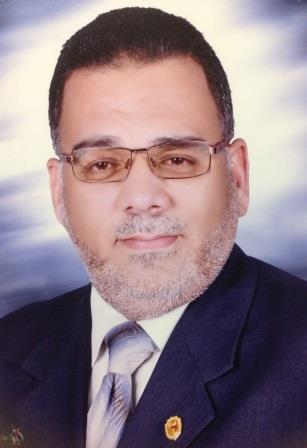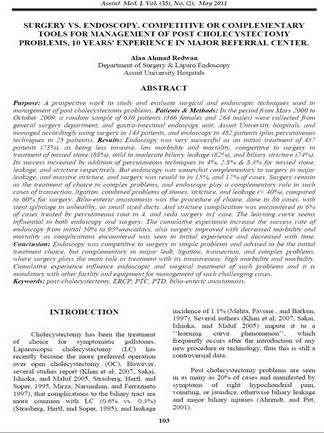Abstract
Purpose: A prospective work to study and evaluate surgical and endoscopic techniques used in management of post cholecystectomy problems.
Patients & Methods: In the period from Mars 2000 to October 2010, a random sample of 630 patients (366 females and 264 males) were enrolled from general surgery department, and gastro-intestinal endoscopy unit, Assuit University hospitals, and managed accordingly using surgery in 143 patients, and endoscopy in 482 patients (plus percutaneous techniques in 25 patients).
Results: Endoscopy was very successful as an initial treatment of 457 patients (73%), as being less invasive, low morbidity and mortality, competitive to surgery in treatment of missed stone (88%), mild to moderate biliary leakage (82%), and biliary stricture (74%). Its success increased by addition of percutaneous techniques in 4%, 2.8% & 8.3% for missed stone, leakage, and stricture respectively. But endoscopy was somewhat complementary to surgery in major leakage, and massive stricture, and surgery was resold to in 15%, and 17% of cases.
Surgery remain as the treatment of choice in complex problems, and endoscopy play a complementary role in such cases of transection, ligation, combined problems of stones, stricture, and leakage (< 40%), compared to 60% for surgery. Bilio-enteric anastomosis was the procedure of choice, done in 86 cases, with stent splintage in unhealthy, or small sized ducts. And stricture complication was encountered in 6% of cases treated by percutaneous rout in 4, and redo surgery in1 case.


